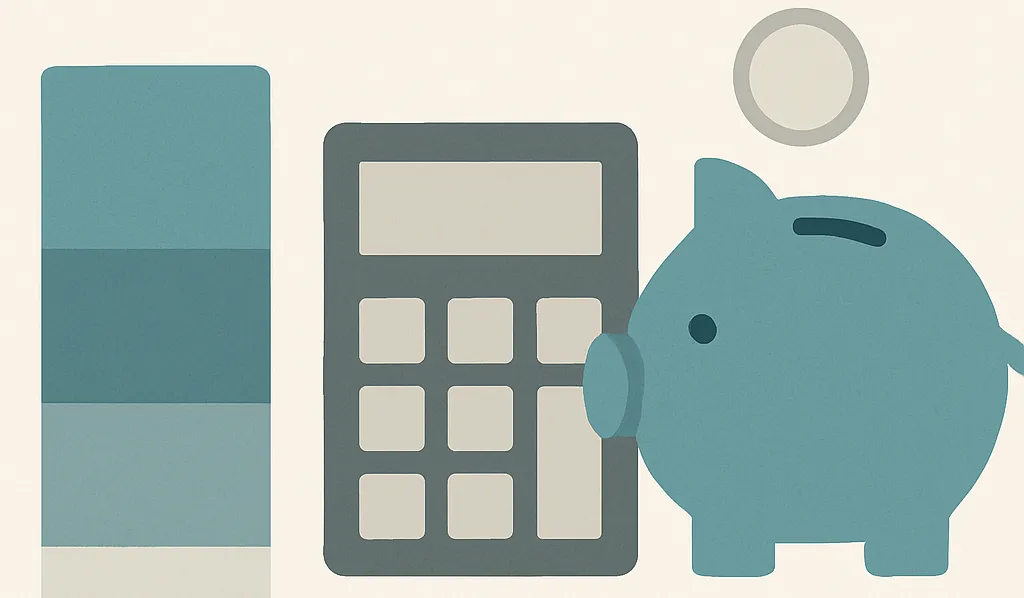Emergency Fund Calculator - Tool

What the Emergency Fund Calculator Is For
The calculator turns a simple question - “How much cash should be on hand for a true emergency?” - into a tailored dollar range. It focuses on essential spending (housing, food, utilities, insurance, minimum debt payments), not discretionary items. The range adapts to work stability and family structure, aligning with mainstream guidance that often starts at 3–6 months and scales up for higher risk. FINRA
Key Takeaways
- The tool estimates a months-of-expenses range based on stability (income type), number of income sources, and dependents - then converts that into dollars using monthly essential expenses.
- The output is a range, not a point. The mid-point is a useful working target; real life may justify leaning high or low.
How to Use the Calculator (Field-by-Field)
Monthly Essential Expenses
Enter the bare-bones monthly spend - housing, food, utilities, insurance, transportation, and required debt minimums. Exclude dining out, travel, or non-essential subscriptions.
Why this matters: This number drives every dollar in the output; padding it can overbuild the fund and leave too little invested for long-term goals.
Income Stability
Select Stable/Preditable if paychecks are steady (salary, long-tenure W-2). Choose Variable/Commission/Self-Employed if income is cyclical, seasonal, or bonus-heavy.
What the tool does: Variable income adds months to the baseline because cash-flow gaps are more likely. (This aligns with the idea that the less predictable the income, the longer the runway.)
Income Sources
Pick One source or Two+ sources.
What the tool does: Multiple earners typically reduce household risk of a full income stop; the suggested range tightens or shifts down accordingly.
Dependents
Select 0, 1, or 2+.
What the tool does: More dependents, more buffer - medical surprises, childcare, and schedule shocks add uncertainty.
Calculate
Press Calculate to see four outputs:
- Suggested months (range). The customized span (e.g., 5–8 months).
- Target fund (mid-point). A single number (e.g., $22,750) using your months × expenses.
- Min/Max dollars. Bookends of the range for planning (e.g., $17,500–$28,000).
- Range preview bar. A visual guide - useful for tracking progress over time.
Beneath the outputs, you’ll also see storage suggestions and a short rationale for the range chosen.
Where to Keep the Fund (and Why)
The tool provides general examples of how some households might structure an emergency fund once it exceeds about six months of expenses:
- First 3–6 months: Often held in a high-yield savings or money market account to maintain immediate access to cash.
- Amounts beyond that: Some individuals choose short-term U.S. government securities - such as Treasury bills or Treasury money market funds - for a modest yield while retaining relatively quick liquidity.
Important: Bank deposits are generally FDIC-insured up to $250,000 per depositor, per bank, per ownership category; Check limits if balances are large. (FDIC.)
So what? Earning a bit of yield without sacrificing access helps the fund keep pace while still doing its main job: being there, immediately. (Remember that bond funds can fluctuate; money market rules and risks differ.)
This interactive analysis tool uses user-provided assumptions to illustrate a general emergency fund range based on monthly essential expenses, income stability, number of income sources, and dependents. Results are hypothetical and for educational purposes only. The range is derived from widely used financial planning guidelines and does not reflect personalized advice or guarantees. Actual needs may vary based on individual circumstances, employment volatility, and access to other resources. Changing inputs will materially change results. This tool does not provide investment, tax, or legal advice, and examples of where to hold funds are for illustration only.
How optimized is your portfolio?
PortfolioPilot is used by over 40,000 individuals in the US & Canada to analyze their portfolios of over $30 billion1. Discover your portfolio score now:






